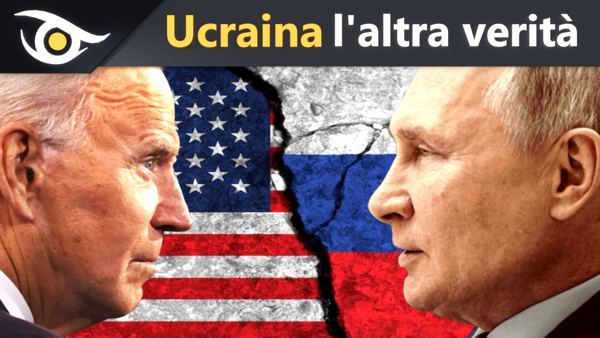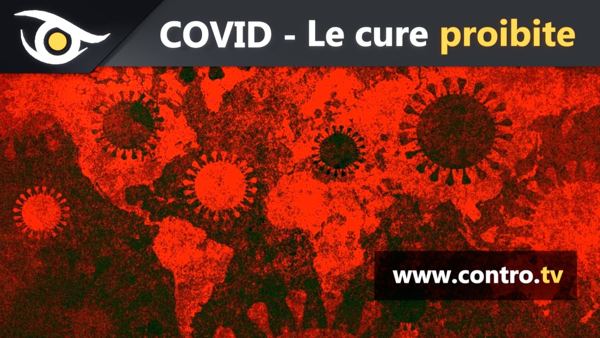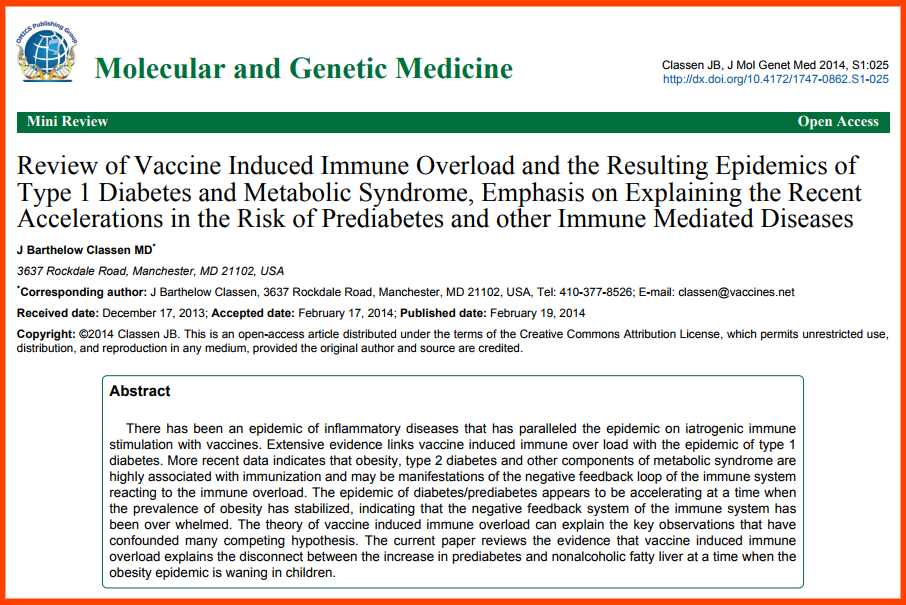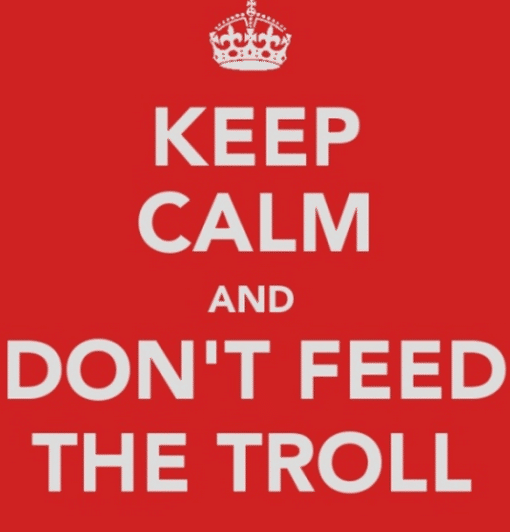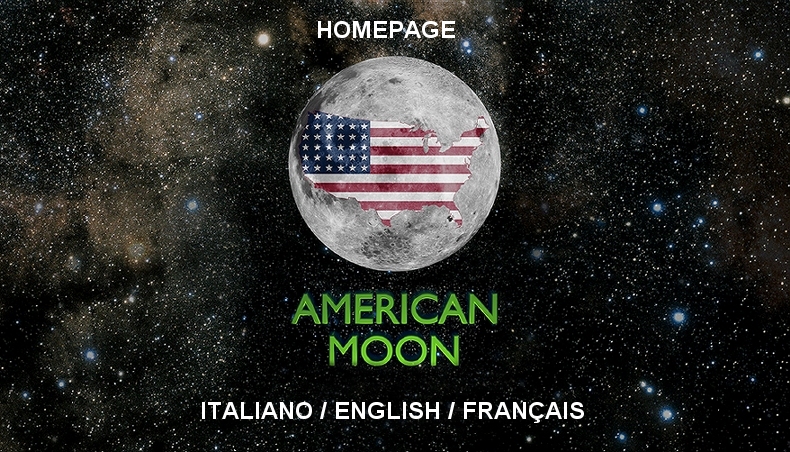- Messaggi: 295
- Ringraziamenti ricevuti 92
Vaccini: documentazione contro
Sovrastimolazione Vaccinale e Autoimmunità
autoimmunityreactions.org/2017/07/22/sov...molazione-vaccinale/
Sovrastimolazione immunitaria.
È in atto da anni un' “epidemia” di patologie infiammatorie che è sovrapponibile alla iatrogenicità causata dalla sovrastimolazione del sistema immunitario attraverso i vaccini.
Ci sono ampie prove di collegamenti fra l’immunizzazione vaccinale e l’epidemia di diabete di tipo 1.
Dei dati più recenti indicano che l’obesità, il diabete di tipo 2 e di altri componenti della sindrome metabolica sono fortemente associati con l’immunizzazione vaccinale e possono essere espressione diretta della risposta negativa del sistema immunitario come reazione al sovraccarico immunitario.
L’“epidemia” di diabete/prediabete sembra accelerare nel momento in cui la prevalenza dell’obesità è stabilizzata, indicando che il sistema di risposta negativo del sistema immunitario è stato sopraffatto.
La teoria dell’induzione del sovraccarico immunitario causata dalle vaccinazioni può spiegare le osservazioni chiave che hanno confuso molte ipotesi tra loro in competizione.
Le ricerche indicate in questa rassegna evidenziano che il vaccino ha indotto un sovraccarico immunitario e spiega l’accentuarsi della divergenza tra l’aumento di prediabete e la steatosi epatica non alcolica in un momento in cui il epidemia di obesità è in calo nei bambini.
Fonte: Molecular and Genetic Medicine Classen JB, J Mol Genet Med 2014, S1:025
dx.doi.org/10.4172/1747-0862.S1-025
Review of Vaccine Induced Immune Overload and the Resulting Epidemics of Type 1 Diabetes and Metabolic Syndrome, Emphasis on Explaining the Recent Accelerations in the Risk of Prediabetes and other Immune Mediated Diseases. J Barthelow Classen MD* 3637 Rockdale Road, Manchester, MD 21102, USA *Corresponding author: J Barthelow Classen, 3637 Rockdale Road, Manchester, MD 21102, USA, Tel: 410-377-8526; E-mail: classen@vaccines.net
Received date: December 17, 2013; Accepted date: February 17, 2014; Published date: February 19, 2014 Copyright: ©2014 Classen JB. This is an open-access article distributed under the terms of the Creative Commons Attribution License, which permits unrestricted use, distribution, and reproduction in any medium, provided the original author and source are credited.
Si prega Accesso a partecipare alla conversazione.
Qui potete trovare un report di tutte le reazioni avverse da vaccino negli stati uniti.
Per capire bene consiglio di incollare la colonna "died" alla colonna A del foglio exel perchè, come impostata da loro , non evidenzia dei dati che dire allarmanti è sottostimare la situazione
vaers.hhs.gov/data/datasets.html
Appena rientro magari lo faccio io e metto un link per il download da mediafire
Si prega Accesso a partecipare alla conversazione.
- Michele Pirola
-

- Offline
- Utente
-

- Messaggi: 668
- Ringraziamenti ricevuti 27
Si prega Accesso a partecipare alla conversazione.
Many neurological diseases, including autism, depression, dementia, anxiety disorder and Parkinson’s disease, are associated with abnormal sleep patterns, which are directly linked to pineal
gland dysfunction. The pineal gland is highly susceptible to environmental toxicants. Two pervasive substances in modern industrialized nations are aluminum and glyphosate, the active ingredient in the herbicide, Roundup®. In this paper, we show how these two toxicants work synergistically to induce neurological damage. Glyphosate disrupts gut bacteria, leading to an overgrowth
of Clostridium difficile. Its toxic product, p-cresol, is linked to autism in both human and mouse
models. p-Cresol enhances uptake of aluminum via transferrin. Anemia, a result of both aluminum
disruption of heme and impaired heme synthesis by glyphosate, leads to hypoxia, which induces
increased pineal gland transferrin synthesis. Premature birth is associated with hypoxic stress
and with substantial increased risk to the subsequent development of autism, linking hypoxia to
autism. Glyphosate chelates aluminum, allowing ingested aluminum to bypass the gut barrier.
This leads to anemia-induced hypoxia, promoting neurotoxicity and damaging the pineal gland.
Both glyphosate and aluminum disrupt cytochrome P450 enzymes, which are involved in melatonin metabolism. Furthermore, melatonin is derived from tryptophan, whose synthesis in plants
and microbes is blocked by glyphosate. We also demonstrate a plausible role for vitamin D3 dysbiosis in impaired gut function and impaired serotonin synthesis. This paper proposes that impaired sulfate supply to the brain mediates the damage induced by the synergistic action of aluminum and glyphosate on the pineal gland and related midbrain nuclei.
( file.scirp.org/Html/5-3000951_53106.htm )
"Il solo obbligo che io ho il diritto di arrogarmi è di fare sempre ciò che credo giusto."
Si prega Accesso a partecipare alla conversazione.
Alluminio, Vaccini e Reazioni Autoimmuni
autoimmunityreactions.org/2018/08/22/all...reazioni-autoimmuni/
"In questa rassegna di abstracts, vengono descritti gli effetti dei sali di Alluminio impiegati nei vaccini sulla fisiologia. In particolare, vengono descritti:
1) gli effetti della tossicità non-lineare dell’Alluminio (indipendenti dalla dose);
2) le disfunzioni cognitive con miofascite macrofagica indotte dall’ idrossido di alluminio;
3) la persistenza a lungo termine dell’idrossido di alluminio derivato dal vaccino associata con disfunzione cognitiva cronica;
4) le anomalie metaboliche riscontrate con PET (Tomografia ad Emissione Positronica) in malati di miofascite macrofagica lungamente persistente. (...) "
Si prega Accesso a partecipare alla conversazione.
- michele.penello
-

- Offline
- Utente
-

- Messaggi: 74
- Ringraziamenti ricevuti 8
aggiungo questo piccolo contributo che ha 8 anni ma è ovviamente attuale...quando c'era meno censura:
AUTORE: Aldo Ferrara Massari
Docente di medicina università di Siena
Alcuni lettori chiedono se sia opportuna una politica delle vaccinazioni. Io rispondo: dipende quali ed in qual modo si fanno. Con l’acqua ed i vaccini, abbiamo eradicato nel Terzo Mondo gran parte delle malattie infettive che hanno seminato morti infantili. Vero! Ma se le condizioni locali obbligano alle vaccinazioni di massa, in Italia questo problema non c’è. Piuttosto bisogna verificare se alcune vaccinazioni d’obbligo, quelle per il morbillo e la rosolia, non siano più portatrici di rischio rispetto le loro stesse malattie che noi tutti, della generazioni post-bellica, abbiamo superato perfettamente. Io ho contratto il morbillo a 7 anni, la parotite a 9 eppure ho avuto tre figli, ho dribblato le malattie infantili senza vaccini e sono qui che scrivo. Purtroppo, dirà qualcuno!
Il vero problema è che: a) le indicazioni al vaccino non le dà il Medico Curante ma il TG con i bombardamenti mediatici di massa. L’altro problema (b) è che il medico curante trascura, quando chiamato, se chiamato e soprattutto se ci va, di chiedere al paziente, alla mamma del piccolo vaccinando o a chi deve eseguire il vaccino, se ha avuto pregresse patologie virali nei 25 giorni antecedenti, se ha avuto febbre di qualsivoglia natura (dall’influenza al granuloma dentario) o se ha preso farmaci immunosoppressori come il cortisone.
Il terzo problema (c) è l’autocura: si va dal farmacista e si chiede il vaccino e quello te lo dà senza prescrizione. Io chiesi all’ex Ministro Sirchia di diramare una Circolare Ministeriale (diramata devo dire) per obbligare il farmacista al rispetto delle ricetta. Il quarto problema (d) è che le pressioni dell’Industria sono così invadenti e virulente ( è il caso) da imporre agli Organi Ministeriali campagne devastanti come quelle della Febbre Suina. Conclusione di questa: abbiamo speso 200 milioni in comunicazione pubblicitaria (web, Tv, Radio e cartacea) del tutto inutile e 400 milioni per 24.000.000 di dosi vaccinali di cui sono state utilizzate solo 700.000 unità. E le restanti 23.700.000? Tutta Roba da Terzo Mondo dove sarà indirizzata. Ottimo, aiutiamo l’Africa ma almeno ditecelo!
LE SINDROMI DA SQUILIBRIO IMMUNITARIO POST VACCINALE
La trattazione sullo squilibrio immunitario da Vaccino è specifica e tediosa e ve la risparmio, però si sappia che il vaccino è un farmaco è non indenne da effetti indesiderati. Le interferenze che ogni vaccinazione determina al livello immunitario obbliga ad una condotta sanitaria di analisi clinica anziché di inclusione ubiquitaria. Ciò vuol dire che per ogni vaccinazione è d’obbligo la valutazione clinica del soggetto, caso per caso e non la indiscriminata distribuzione longitudinale del prodotto vaccinico, qual’esso sia.
Il sistema immunitario ha due funzioni separate e in equilibrio tra di loro, T1 e T2. Con T1 è indicata l’immunità cellulare, primaria difesa contro funghi, virus e protozoi; con T2 è indicata l’immunità sierologica (IgE, IgM, IgG), che produce anticorpi specifici. T1 è il processo di eliminazione diretti degli agenti aggressori.T2 rappresenta l’immunità funzionale ed il riconoscimento immunologico. Alla base di ogni problema immunologico c’è uno squilibrio tra le funzioni T1 e T2.
Un vaccino diminuisce l’immunità mediata da linfociti (T1) del 50%, due vaccini insieme del 70%. Ormai sono una norma 3 vaccini nella stessa iniezione, il tutto ripetuto in tre dosi successive a distanza di qualche mese. I vaccini riducono il numero di globuli bianchi, la vitalità dei linfociti, la segmentazione dei neutrofili. Il livello di produzione delle IgE è sotto lo stretto controllo dei linfociti T2. Lo squilibrio verso T2 è un fattore predisponente alle allergie (raffreddori, asma, rash cutanei, etc..). Nella vita odierna il condizionamento ambientale massivo dà luogo all’incremento esponenziale delle forme allergiche tra cui rinite allergica, asma bronchiale allergico, dermatite atopica, che rappresentano il risultato di una risposta T2 nei confronti di antigeni ambientali innocui (allergeni).
1. I vaccini contengono sostanze chimiche (formaldeide) e metalli tossici (mercurio e alluminio) che hanno un forte effetto di depressione immunitaria (T1, ridotto numero di macrofagi). Il mercurio è il più allergizzante dei metalli insieme al nichel (T2, iperattività IgE, IgM).
2. I vaccini contengono tessuti e materiale DNA/RNA di altri animali, che hanno l’effetto di deprimere il sistema immunitario attraverso un meccanismo di rigetto dell’organismo di cellule estranee.
3. I vaccini alterano il rapporto di linfociti T helper/ linfociti soppressori. Tale parametro è un indicatore chiave del grado di funzionalità del sistema immunitario.
4. I vaccini alterano l’attività metabolica di polimorfonucleari (NPM),utili nella difesa dell’organismo contro batteri e virus e riducono la loro capacità fagocitante.
5. I vaccini sopprimono la nostra immunità non solo sovraccaricando l’organismo con mercurio ed altro materiale estraneo, ma anche introducendo virus attenuati e patogeni. Mentre le tossine nei vaccini rallentano il sistema immunitario, i virus si instaurano e mutano predisponendosi ad un nuovo stato infettivo.
6. I vaccini impoveriscono il nostro organismo di elementi essenziali per la vitalità immunitaria, quali vitamina C, A e zinco, attivatori e modulatori di globuli bianchi e macrofagi per funzionare in maniera ideale.
Alterare questi fattori avrà conseguenze anche sulla immunità. Di qui una possibile spiegazione all’incremento fino a 50 mila unità di soggetti colpiti da sclerosi multipla. Una forte polarizzazione verso T2 è caratteristica di patologie autoimmuni e sclerosi sistemiche e produzione di auto-anticorpi. Elevati livelli di anticorpi alle proteine di base della mielina cerebrale sono riscontrati in oltre il 95% dei bambini autistici (Singh et al., 2003).
T1 (linfociti T helper di tipo 1) produce una serie di modulatori immunitari molto importanti: interferone gamma, interleukina (IL)-2 e TNF, tumor necrosis factor. Uno studio pubblicato dal Journal of Infectious Diseases ha documentato una diminuzione di interferone causata dal vaccino del morbillo, declino che persiste per un anno dopo la vaccinazione. L’interferone è una sostanza prodotta da T1 che rende l’organismo resistente alle infezioni. Il risultato finale è che i vaccini portano ad una maggiore vulnerabilità alle infezioni. Ed in effetti fu osservato (American Journal of Public Health Investigators,1990) che, su un campione di 3437 casi di polio nello stato di New York, le vittime avevano probabilità doppia di comparsa del polio, dopo vaccino DTP (difterite tetano pertosse) nei due mesi precedenti, la rispetto ai bambini di controllo.
Più recentemente, in un’epidemia di polio nello stato di Oman, è stato dimostrato che le vaccinazioni DPT avevano causato la comparsa di polio paralitico. Quanto sopra indicato segnala che esistono numerosi elementi scientifici per dimostrare l’assunto in base al quale, contrariamente a quanto ipotizzato in passato, i vaccini non rafforzano o sostengono il sistema immunitario nel suo complesso. Anzi predispongono ad infezioni ed allergie, rispettivamente perché deprimono T1 e spostano l’equilibrio verso T2.
LE CONTAMINAZIONI
Polio: uno dei problemi relativi a questo vaccino deriva dalla sua contaminazione con un numero ancora sconosciuto di virus animali. Il vaccino contiene centinaia di migliaia di virus che possono produrre polio, meningite, encefalite, epilessia. Accreditate ricerche ha mostrato che l’iniezione di un virus da una specie di scimmia all’altra ha provocato lo sviluppo di tumori maligni. La cancerogenicità di alcuni di questi virus è stata dimostrata da Sweet (1960), Fraumemeni (1963), Gerber (19621), Rowe (1962). Innes scoprì nel 1968 che la mortalità per leucemia negli USA dal 1955 al 1959 era cresciuta del 10% circa tra i 5 e i 14 anni, proprio negli anni del Salk. Secondo l’O.M.S., tra il 1970 e il 1974 in otto paesi europei ci sono stati 360 casi di polio di cui 205 associati alla vaccinazione. Secondo il Medical Letter (1988), negli ultimi decenni negli USA si sono verificati fino a 5-10 casi dall’anno di polio paralitica come conseguenza del vaccino Sabin, praticamente quasi il 100% dei casi di polio paralizzante. Secondo Mendelshon, nel 1977, su 18 casi di polio negli USA, 13 erano derivati dalla vaccinazione. In Israele nell’88 ci sono stati 15 casi di polio (Slater,1988) di cui 9 vaccinati con almeno tre dosi di Sabin, due con due dosi, ed uno con una. Si ritiene che l’87% dei casi di polio dal 1970 negli USA derivano dall’uso del vaccino antipolio.
Morbillo: nel giugno 1984 la rivista medica “USA MMWR” ha riportato un’epidemia di morbillo tra studenti dell’Illinois e del New Mexico vaccinati da poco al 98%. Gustafson (1987) descrive un’epidemia in una scuola secondaria con un indice di vaccinazione al 99% con virus attenuato. Secondo la FDA nel 1988, l’80% dei casi di morbillo erano di persone precedentemente vaccinate al morbillo.
Parotite: secondo West (1966), la mancanza della malattia in età infantile corrisponde ad una maggior probabilità di cancro alle ovaie e in generale di tutti i cancri (Ronnie, 1985). Efficacia: dal 1986 sta aumentando l’incidenza di parotite, caratterizzata da una particolare presenza tra gli studenti delle scuole medie e superiori.
Rosolia: efficacia: Secondo Cherry (1980), l’utilizzo di centinaia di milioni di dosi negli USA non ha sortito alcun effetto nei confronti delle continue ondate periodiche della malattia, anzi è stata notata la reinfezione da parotite nei vaccinati. Kloch e Rachelefsky (1973) hanno descritto un’epidemia di oltre mille casi a Casper (USA) nel 1971 che si presentò nove mesi dopo la campagna vaccinale e coinvolse per lo più vaccinati, pari all’83% nelle elementari ed il 52% negli asili. Hartman afferma che la rosolia produce malattia visibile solo nel 2-5% di non vaccinati contro un 50-100% dei vaccinati, cosa che dovrebbe far riflettere in generale sull’efficacia dei vaccini.
Pertosse: nel 1975 il Giappone decise di posticipare questa vaccinazione (particolarmente pericolosa) dal secondo mese di vita al secondo anno di vita e nel 1981 fu abolita del tutto. A partire dal 1975 la mortalità nei primi mesi di vita scomparve in Giappone, ma aumentò l’incidenza di meningite al secondo anno di età. Levine (1966) e Savinski (1973) hanno documentato che alti dosaggi di tale vaccino preludono alla comparsa di encefalomielite nell’animale. Smith (1988) ha dimostrato l’esistenza della meningite da vaccino, con incrementi pari al 400% al terzo mese di età. In tutti i Paesi in cui sono partiti massicci programmi di vaccinazioni si sono verificati aumenti esponenziali di casi di paralisi cerebrali.
Antinfluenzale (Emophilus
 : numerosi ricercatori segnalano il pericolo di complicazioni neurologiche (encefaliti e paralisi di Guillen-Barrè) soprattutto nei bambini, a seguito di vaccini antinfluenzali. A seguito di massiva vaccinazione, con oltre 40 milioni di soggetti, furono registrate migliaia di reazioni avverse con centinaia di paralisi di Guillen-Barrè e 10 decessi, nell’arco di quattro mesi. Conseguirono 4.000 cause civili che con un fatturato di 3 miliardi di dollari di risarcimento. Nel 1978-79 una nuova campagna convinse nuovamente gli americani a vaccinarsi e nel periodo 78- 79 apparvero altri casi di Guillen-Barrè, di cui il 67% era già stato vaccinato nel 1976. Secondo uno studio del CDC, i bambini vaccinati avevano un’incidenza 5 volte maggiore di contrarre il virus del vaccino stesso e quindi l’influenza.
: numerosi ricercatori segnalano il pericolo di complicazioni neurologiche (encefaliti e paralisi di Guillen-Barrè) soprattutto nei bambini, a seguito di vaccini antinfluenzali. A seguito di massiva vaccinazione, con oltre 40 milioni di soggetti, furono registrate migliaia di reazioni avverse con centinaia di paralisi di Guillen-Barrè e 10 decessi, nell’arco di quattro mesi. Conseguirono 4.000 cause civili che con un fatturato di 3 miliardi di dollari di risarcimento. Nel 1978-79 una nuova campagna convinse nuovamente gli americani a vaccinarsi e nel periodo 78- 79 apparvero altri casi di Guillen-Barrè, di cui il 67% era già stato vaccinato nel 1976. Secondo uno studio del CDC, i bambini vaccinati avevano un’incidenza 5 volte maggiore di contrarre il virus del vaccino stesso e quindi l’influenza.Vaiolo: Kittel verifica che, dopo l’antivaiolosa, 3297 bambini hanno riportato danni all’udito e 71 sono rimasti sordi. Bambini che hanno ripetuto l’antivaiolosa diverse volte presentano delle aberrazioni cromosomiche nei loro globuli bianchi. Miller (1967) descrive nove pazienti che svilupparono la sclerosi multipla dopo la prima o la seconda vaccinazione antivaiolosa. Il Messico e l’India hanno subito le epidemie di vaiolo più violente e mortali, sebbene le loro popolazioni fossero state rispettivamente completamente e parzialmente vaccinate. In Italia già nel 1887-89 la morte per vaiolo tra i vaccinati era equivalente a quella tra la popolazione non vaccinata. In Gran Bretagna la vaccinazione anti-vaiolo divenne obbligatoria nel 1853 e vent’anni dopo, nel 1870-71, si manifestò la più spaventosa epidemia della storia (23.000 morti); nei decenni successivi la mortalità da vaiolo in Gran Bretagna diminuì in modo perfettamente parallelo alla diminuzione del tasso di vaccinazione.
UN PROGRAMMA DI PREVENZIONE AD HOC
Quanto sopra si limita a focalizzare alcune condizioni clinico-epidemiologiche che impongono cautela nella vaccinazione indiscriminata. Il principio della cautela, altrove impiegato, ad esempio nella contaminazione elettromagnetica, indica che comunque esso va seguito ed applicato. Basterebbe un solo caso di patologia da introduzione vaccinale per imporre un principio di cautela, ovvero un principio di esecuzione vaccinale controllata. Le motivazioni addotte sono sufficienti e bastevoli per imporre un Programma di Prevenzione non solo delle patologie sottoposte a vaccinazione (Polio, Morbillo, Difterite, Epatite, e soprattutto Influenza) ma di prevenzione delle complicanze attese. Si esclude che si possa continuare senza una programmazione in tal senso anche per i costi che le patologie da complicazione e iatrogene implicano. Pertanto si richiede una politica sanitaria di maggiore controllo della prevenzione vaccinale:·visita clinica presso le ASL prima della pratica vaccinale;·obbligatorietà della prescrizione medica vaccinale;·imposizione di sanzioni penali per coloro che praticano autovaccinazioni e per coloro che vendono prodotti vaccinale senza prescrizione medica.
FONTE: www.ilfattoquotidiano.it/2010/06/26/vacc...le-o-puo-dire/31909/
Aggiungo anche il libro scovato dall'utente bernuga, vedi POST COMMENTI LIBERI
archive.org/details/b21357468/page/n0
Si prega Accesso a partecipare alla conversazione.
We conclude that outbreaks of measles can occur in secondary schools, even when more than 99 percent of the students have been vaccinated and more than 95 percent are immune.
( www.academia.edu/30901044/Measles_Outbre...ry_School_Population )
"Il solo obbligo che io ho il diritto di arrogarmi è di fare sempre ciò che credo giusto."
Si prega Accesso a partecipare alla conversazione.
AUTHORS' CONCLUSIONS:
In people not previously exposed to hepatitis B, vaccination has unclear effect on the risk of developing infection, as compared to no vaccination. The risk of lacking protective antibody levels as well as serious and non-serious adverse events appear comparable among recipients and non-recipients of hepatitis B vaccine.
( www.ncbi.nlm.nih.gov/pubmed/18677780 )
Che poi si parla di un numero di casi praticamente nullo in fascia 0-14 ( old.iss.it/binary/seie2/cont/Tassi_Epatite_B_2016.pdf ).
Chiaramente ci sono categorie a rischio a cui può essere utile, ma tutti gli altri? Tra l'altro da un lato viene fortemente consigliato a chi è costretto ad usare emoderivati, dall'altro assicurano che gli emoderivati sono sicuri e controllati... mettetevi d'accordo almeno.
"Il solo obbligo che io ho il diritto di arrogarmi è di fare sempre ciò che credo giusto."
Si prega Accesso a partecipare alla conversazione.
Due estratti:
Are the vaccines safe?
According to the firms they are safe. Initially, the vaccine was compared with a placebo group being vaccinated with physiological serum, whereby the number of adverse reactions was much higher and much more serious than in the control group. After comparing 320 patients in the saline placebo group a quick move was made to an aluminium-containing placebo, in order to be able to only evaluate the effects of the active substance. However, this distorted the comparison, because no one voluntarily wants to be vaccinated with toxic aluminium, as this is not really necessary, when inoculation with a harmless saline solution can be done. The differences between Gardasil and the saline placebo group were, however, already noticeable15. Here we can refer to the Vioxx scandal, where the adverse reactions in fact were known, but concealed by the firm. Here also the difference between the vaccine and the saline placebo is concealed in all publications, as the table below clearly shows. For serious adverse reactions one suddenly takes the saline and aluminium group together, perhaps to cover up the major differences between these two groups.”
These two experts question seriously the prevailing assumption, apparently also at the EMA, that the vaccine is so important for public health that it is justified not to communicate to the public 1) that there are uncertainties related to vaccine safety, 2) that drug companies cannot be trusted; and 3) that it is wrong to lump together results obtained with a genuine placebo with those obtained with a potentially neurotoxic placebo. We agree with the two experts when they suggest that this lumping may represent a cover up and we also find that the EMA should have informed the public about this unacceptable lumping of a true placebo with an active placebo instead of keeping it secret. This is totally unacceptable and contrary to good scientific practice to such a degree that we consider it outright scientific misconduct committed by the EMA.
The EMA’s procedures for evaluating the safety of medical interventions - where the companies are by and large their own judges - need to be fundamentally reworked and all procedures and information should be made transparent to the public. Our societies should no longer accept that assessments of drug safety are left to companies with huge financial interests and to a drug agency that receives 80% of its funding from the drug industry.
The secrecy imposed by the EMA is not in the public interest. Drug regulators tend to have a narrow vision, either because of their remit or because they have become too close to the drug industry by their daily work, which often involves contacts with the industry, and by employment of people with long careers in the industry. As an example, the EMA’s director, Guido Rasi, has brought in a number of people from the drug company Sigma Tau that include Stefano Marino, his head of legal affairs. Rasi has worked with this company for many years and apparently owns several patents together with the company (15).
Public health is about the promotion of health and prevention of disease and disability through the organised efforts of society. This entails protection from harms and involves progression of knowledge in open collaboration. As far as we can see, the actions of the EMA in this case indicates that the agency is more concerned about protecting its own previous decisions and the vaccine than about protecting the citizens and giving them the option of choosing for themselves whether or not they would like to get vaccinated against HPV. Some people will prefer to avoid the vaccine, even if the risk of serious harm is very small, and some will prefer screening instead. It is not within the powers of regulatory authorities to deny citizens’ right to make informed choices about their own health by withholding important information. The citizens need honest information about the vaccine and the uncertainties related to it; not a paternalistic statement that all is fine based on a flawed EMA report (2).
"Il solo obbligo che io ho il diritto di arrogarmi è di fare sempre ciò che credo giusto."
Si prega Accesso a partecipare alla conversazione.
Esperto del WHO (OMS), direttore del programma di eradicazione del vaiolo, scrive ( academic.oup.com/ije/article-abstract/1/...irectedFrom=fulltext ):
While improved vaccine and vaccination techniques have played a significant role in the progress to date, the principal changes have occurred because of a better understanding of the epidemiology of smallpox and the application of surveillance procedures to interrupt transmission.
With modification of the strategy in vaccination programmes to deal with high risk groups and with intensified surveillance and the institution of specific measures to interrupt the chains of transmission, dramatic changes in smallpox incidence have occurred within the past two years.
Lo stesso (allora) capo del WHO (OMS), Halfdan Mahler, dichiarò ufficialmente che l'eradicazione del vaiolo fu "a triumph of management, not of medicine".
"Il solo obbligo che io ho il diritto di arrogarmi è di fare sempre ciò che credo giusto."
Si prega Accesso a partecipare alla conversazione.
Si prega Accesso a partecipare alla conversazione.
Un caso di disturbo dello spettro della neuromielite ottica dopo la vaccinazione antinfluenzale stagionale.
www.ncbi.nlm.nih.gov/pubmed/30769255
La mielite è un'infiammazione che colpisce il midollo spinale. Dal punto di vista clinico, è possibile distinguere:
Mielite trasversa: limitata ad uno o pochi segmenti del midollo spinale adiacenti, in senso longitudinale, generalmente a livello toracico;
Mielite ascendente: ha la tendenza a propagarsi progressivamente verso le parti alte del sistema nervoso.
scontent-mxp1-1.xx.fbcdn.net/v/t1.0-9/52...4c2d9faf&oe=5CED3CD2
Si prega Accesso a partecipare alla conversazione.
- Michele Pirola
-

- Offline
- Utente
-

- Messaggi: 668
- Ringraziamenti ricevuti 27
hanno trasformato le agenzie regolatorie, FDA, HHS e CDC in burattini e disabilitato il Congresso. Ora sono i più grandi contribuenti al Congresso. Hanno disattivato la stampa diventando i più grandi inserzionisti. Hanno disattivato avvocati e tribunali tramite il VICA, che rende illegale denunciare una società di vaccini, a prescindere da quanto gravi siano le lesioni, o siano tossici gli ingredienti di tali vaccini.
Tutte quelle istituzioni che normalmente proteggono una vittima, un bambino, non esistono più, e l’unica cosa che rimane è l’esame accurato e la vigilanza di HHS. E quindi ci affidiamo assolutamente a questo e ciò che l’HHS ha ammesso qui è che non esiste alcun controllo, non c’è vigilanza, mentre l’obiettivo della sua strategia è stato quello di assicurarsi che i vaccini non venissero mai testati per la sicurezza.
La maggior parte degli americani non comprende che prima di essere autorizzato, ogni altro farmaco e prodotto farmaceutico deve passare attraverso test rigorosi, randomizzati, in doppio cieco, con placebo. I vaccini sono i soli ad essere immuni da questo. Quindi, invece di test quinquennali con veri placebo, i vaccini a volte richiedono solo poche ore di test di sicurezza o pochi giorni.
E naturalmente questo tempo non è abbastanza lungo per individuare i danni con lunghi periodi di incubazione come l’autismo, come l’ADHD, le allergie alimentari, le malattie autoimmuni.
Nessuno potrebbe sostenere che si possa vedere questi danni in un test che dura solo quattro giorni.
(…) il lavoro che doveva fare l’HHS era quello di sviluppare test sulla sicurezza dei vaccini e riferirlo al pubblico e ciò che abbiamo scoperto è che in oltre trenta anni non l’hanno mai fatto una volta sola.”
www.onb.it/2018/12/02/la-vittoria-di-kennedy-contro-lhhs/
Si prega Accesso a partecipare alla conversazione.
Intanto, per inquadrare meglio, partiamo dal fatto che "quelli che non si possono vaccinare" praticamente vale solo per i vaccini a virus vivi, gli altri vengono comunque somministrati. Vediamo poi cosa dicono le guide per alcuni tipi di immunodepressi:
Sidney Kimmel Comprehensive Cancer Center at the Johns Hopkins Hospital ( www.hopkinsmedicine.org/kimmel_cancer_ce...ent-guide-viragh.pdf pag. 31)
Stay away from people who are sick. This includes people with colds, flu, measles, or chicken pox. You also need to stay away from children who just had a “live virus” vaccine for chicken pox or polio. Call your doctor, nurse, or local health department if you have any questions.
Dipartimento Oncologico, ASL di Reggio Emilia (anche se hanno tirato giù il pdf - link originale www.asmn.re.it/allegati/libretto_ematologia.pdf - da wayback machine si trova - web.archive.org/web/20180810094721/www.a...retto_ematologia.pdf - che pagliacci)
St. Jude Children's Research Hospital ( www.stjude.org/treatment/patient-resourc...ting-guidelines.html )
To avoid contact with a person who has a rash after recently receiving the chickenpox (varicella) vaccine.
To avoid contact with a person who has received a intranasal flu vaccine within one week. This applies only if your child is severely immune suppressed such as in the hospital after a recent bone marrow transplant There is no similar risk with the inactivated, injectable flu vaccine.
If a household contact (infant) has recently received rotavirus vaccination, all family members should wash hands thoroughly and frequently after contact with the vaccinated infant, especially when changing diapers.
Household contacts not receive the Oral Polio Vaccine. Note that the oral polio vaccine is not used in the United States
(EDIT 11/05/2019) Si aggiunge anche l'asl di Piacenza ( www.ausl.pc.it/professionisti_servizi/ar...egie_vita_sicura.pdf pag. 3)
ricordare che tutti i bambini sono potenziali portatori di malattie virali (es. morbillo, varicella), pertanto evitate assolutamente i contatti con bambini vaccinati di recente.
Conclusioni: nessuno dice di stare attenti ai non vaccinati, tutti dicono di stare attenti a chi è stato vaccinato di recente con virus vivi.
"Il solo obbligo che io ho il diritto di arrogarmi è di fare sempre ciò che credo giusto."
Si prega Accesso a partecipare alla conversazione.
Da una parte, sappiamo che in Italia è stata depenalizzata la mancata segnalazione (da parte del medico) delle sospette reazione avverse ai farmaci (che mi risulti non c'è proprio niente, multa o richiamo, nulla), e questo non può fare altro che favorire il noto fenomeno di "underreporting":
( www.giornaledicardiologia.it/articoli.ph...vol_id=2852&id=28779 )Il nostro studio ha evidenziato che il fenomeno della mancata segnalazione di ADR da parte dei medici è rilevante e riguarda anche farmaci sottoposti a monitoraggio addizionale e reazioni avverse gravi.
Dall'altra abbiamo notizie di "abusi" delle segnalazioni, parrebbe per favorire prodotti "brand":
Purtroppo, in talune occasioni si osserva un uso distorto delle segnalazioni di sospette reazioni avverse, finalizzato spesso a giustificare la scelta di un particolare farmaco.
Infatti, in alcuni casi, quando il medicinale aggiudicato è un equivalente, la segnalazione di sospetta ADR è utilizzata quale strumento per permettere l’accesso al farmaco brand
uno sproporzionato aumento del numero di segnalazioni di sospette reazioni avverse per alcuni principi attivi per i quali è scaduto il brevetto e quindi esistono i medicinali equivalenti e biosimilari
La maggior parte di queste segnalazioni proviene da medici che non avevano mai segnalato una reazione avversa prima del 2014 e da Regioni in cui sono stati stipulati accordi attraverso i quali sostanzialmente il farmacista è autorizzato a non sostituire il prodotto originator con l’equivalente o biosimilare a patto che il paziente sia intollerante a quest’ultimo e che ciò sia dimostrato dall’inserimento nella RNF dell’apposita scheda di segnalazione di sospetta reazione avversa.
In altri casi, la segnalazione è utilizzata per giustificare la prescrizione di un medicinale la cui prescrivibilità a carico del SSN è subordinata alla comparsa di una ADR ad un altro principio attivo.
( www.bollettinosifo.it/r.php?v=2900&a=292...igilanza_Cananzi.pdf )
Tutto questo per dimostrare, se ce n'era bisogno, che allo schifo non c'è mai fine: questo argomento pare esserne fonte inesauribile.
"Il solo obbligo che io ho il diritto di arrogarmi è di fare sempre ciò che credo giusto."
Si prega Accesso a partecipare alla conversazione.
The ethical dilemma – the trolley problem
This commentary does not attempt to examine if these
excess deaths after vaccination (presumed to be caused by
the vaccine) can be offset by the lives saved through disease
prevention owing to the vaccine. In her classical thought
experiment, called the “Trolley dilemma”, Philippa Foot asks
if it is ethical to redirect a runaway trolley from a track on
which it would kill five persons to another track where only
one would die (11). In a variation of the trolley dilemma, the
single person on the alternative track is the child of the person
who can switch the tracks. Judith Thomson assumes that five
lives can be saved with organ transplants from one healthy
donor, and asks if it would be ethical to surreptitiously kill
one person to save the other five (12). Ethicists argue that the
end cannot justify the means. If one glosses over the deaths
after vaccination, one can prevent/delay the evaluation of the
vaccine’s safety profile and this has the potential to result in
more, unnecessary deaths, which is difficult to justify ethically.
Summary and conclusion
von Kries (1) reported a statistically significant increase in the
SMR in children in their second year of life, within two days of
vaccination with Hexavac® (one of the two licensed hexavalent
vaccines, now withdrawn).
In its periodic safety update reports, GSK, the company
manufacturing Infanrix hexa, evaluates whether the number
of sudden deaths reported after vaccination with their product
exceeded the number that could be expected by chance. The
clustering of deaths soon after immunisation suggests that the
deaths could have been caused by the vaccine.
Furthermore, our analysis shows that the deaths
acknowledged in the PSUR 16 have been deleted from the
PSUR 19. The observed deaths are spontaneously reported to
GSK and are likely to be underestimated. Adding in the deaths
deleted from the PSUR 16, there is a statistically significant
increased risk of death in the first four days after vaccination,
compared to the expected deaths. The manufacturers will need
to explain why these deaths were not included in the PSUR
19. The increased risk of death was not communicated to the
regulatory authorities or to the health personnel administering
this vaccine.
Given the above, it is difficult to understand how the EMA
accepted the PSUR 19 at face value. It may be argued that due
diligence was not exercised, as a result of which numerous
children were unnecessarily exposed to the risk of death.
Ricordiamo inoltre che l'Infanrix viene usato per "recuperare gli inadempienti" mi risulta fino ai 6 anni quando è noto (scritto nel bugiardino! - www.ema.europa.eu/en/documents/product-i...t-information_en.pdf ) che:
The safety and efficacy of Infanrix hexa in children over 36 months of age have not been established.
No data are available.
"Il solo obbligo che io ho il diritto di arrogarmi è di fare sempre ciò che credo giusto."
Si prega Accesso a partecipare alla conversazione.
MORBILLO
Prima del vaccino, introdotto in italia nel 1984, c'erano in media 450.000 casi all'anno ( www.epicentro.iss.it/morbillo/epidemiologia-italia corretto con fattore 10 come riconosciuto dallo stesso ISS old.iss.it/binary/publ/cont/Pag._335_340...ol._35_N._2_1999.pdf ) con mortalità statisticamente insignificante, ricordiamo in assenza di vaccini: 0,2 su mille nati vivi nel 1971 e 0,0 su mille nati vivi nel 1981 ( www.unicef.it/Allegati/Rapporto%20UNICEF..._ISTAT%20low-res.pdf tabella 1, pag.
 .
."Il solo obbligo che io ho il diritto di arrogarmi è di fare sempre ciò che credo giusto."
Si prega Accesso a partecipare alla conversazione.
Per poter verificare e quantificare i benefici delle vaccinazioni basterebbe fare uno studio che metta a confronto lo stato di salute tra chi è stato vaccinato e chi no.
Vaccinati e non vaccinati? Qualche studio c’è!
www.medicinapiccoledosi.it/vaccini/rivel...-confronto-vaccinati
“(…) Nonostante gli sforzi del CDC per la soppressione, scienziati indipendenti e istituti di ricerca (tra cui UCLA) sono riusciti a condurre e pubblicare diversi studi aggiuntivi vaccinati/non vaccinati dal 1999.
Tali studi indicano un’alta incidenza di malattie croniche e lesioni cerebrali e del sistema immunitario tra le coorti vaccinate rispetto a quelle non vaccinate.”
Robert Kennedy Jr,
childrenshealthdefense.org/news/fully-va...Qet18TLXPsjh_KoG9fYE
Pdf con slides con il confronto tra vaccinati e non vaccinati
childrenshealthdefense.org/wp-content/up...-Unvaxxed-Slides.pdf
Si prega Accesso a partecipare alla conversazione.
"Questa piccola collezione di studi scientifici evidenzia come le cause che possono indurre le encefalopatie definite erroneamente come “autismo” hanno come denominatore comune un’origine di tipo neurotossico.
Dal mercurio all’alluminio, ai vaccini coniugati, all’elevato livello di anticorpi per il morbillo nei vaccinati con MPR, alla presenza di DNA fetale, all’insorgenza di una o più condizioni autoimmuni a livello del sistema nervoso centrale, all’alterazione profonda dei rapporti di equilibrio del microbiota gastroenterico, il loro ruolo nel determinare disturbi neurologici di diversa natura e a vario livello di gravità è oramai accertato
(Davide Suraci, alias autoimmunityreactions, alias yellowbrain).
autoimmunityreactions.org/2019/08/01/vaccini-encefalopatie/
Si prega Accesso a partecipare alla conversazione.
Si prega Accesso a partecipare alla conversazione.
Si prega Accesso a partecipare alla conversazione.
ilsimplicissimus2.com/2020/05/13/come-ga...37n1IMUJRmOudBcKnkio
Si prega Accesso a partecipare alla conversazione.
Si prega Accesso a partecipare alla conversazione.
Si prega Accesso a partecipare alla conversazione.
- CharlieMike
-

- Offline
- Utente
-

- Messaggi: 3931
- Ringraziamenti ricevuti 573
m4x ha scritto: Ho visto di tutto, ma questo, questo ha estinto ogni mia speranza nel genere umano:
... e questo stronzo lo applaudono pure!
Se la ridono anche.
Si prega Accesso a partecipare alla conversazione.

